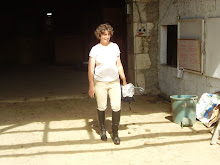The traditional style of transmitting knowledge was the professor who
lectured in front of awed disciples who copied his wisdom down in notes that were preserved religiously. It was
a style that preceded the invention of the printing press, the mimeograph, the
photocopier, the recording machine, videos, etc.,etc.
It was only in the last century that teachers began questioning the traditional
model, arguing that students should be more active, should be encouraged to
seek their own answers, find their own resources, that they should animate the
class while the teacher simply proposed questions and guided them to keep them
on the rails. All the manuals began to
talk about “student-centered” learning.
There were many slogans designed to promote the new style of learning. One of them was “Kill the teacher”. Another was “sage on the stage versus guide
on the side.” When I first heard these expressions I welcomed them as a breath
of fresh air, something that could empower students and make classes more
dynamic and interactive. There is no question in my mind that the lecturer
model of transmitting knowledge is the most ineffective way of teaching a
foreign language known to man.
Some observers of a TPRS class notice that the teacher talks throughout
much of the class. So they come to the
superficial judgment that the teacher is being too directive, monopolizing the
discourse and following the medieval tradition of “sage on a stage”.
I would ask such observers to look again. Throughout a TPRS class we are constantly
interacting with students. We are not spouting wisdom but asking them
questions about themselves, something they know a lot about. They are the
experts. They are the subject of the class. If TPRS teachers were to simply
speak in the target language without the constant interaction that comes from
PQA and circling, they would soon lose their "audience". On the
contrary, students are fully engaged during a TPRS lesson, engaged in a
conversation with the teacher about themselves, a conversation which uses their
input to build a story. We are modeling the language, but giving them every
opportunity to express themselves as much as they can.
I think dancing partner would be a better description of what we do.
The better dancer “leads” so that their partner can follow. It’s the
interaction that is magic. The best way
to learn to waltz is to have a partner that knows what they're doing.

No comments:
Post a Comment